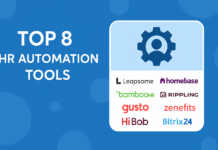Digitalization has its own set of risks and Financial Fraud due to various reasons is one of the biggest issues that companies all around the globe are constantly trying to find solutions for. You may suffer from job fraud as well as cybercrime. Preventing your organization from falling prey to cybercrimes is critical not just for maintaining trust but also for sustaining the business, protecting its assets including cash flow, and assuring long-term stability. This article will take an in-depth look at ways your company can be protected from Financial Fraud in the era of technology.
What Is Fraud Prevention And Why Is It Important To Solve This Problem?
Fraud prevention can be said to be the strategies and tools that a business has created with the goal of detecting and battling fraudulent activities that have happened within that business and span as well. This is no threat because it is a means of enhancing your company’s identity and respect in the market and the financial realm.
There are several reasons why fraud deterrence might need to be given priority above a host of options available to a business:
- Protection of finances: Preventing financial theft is the simplest way to keep revenue-generating activities alive because the loss of money translates into a loss of trust.
- Saving of image: It is easy to trust a business that shows more commitment to preventing fraudulent activities.
- Ensuring the smooth running of activities: Fraud has been shown to paralyze business functions and result in losses.
- Regulatory obligation and culture: Putting into practice fraud measures prevents breaches of the law and is a good way of safeguarding morals.
Also read: Top Technology and Social Media Controversial Moments in 2024
Kinds of Financial Frauds that are Aimed at Businesses
The first step in prevention is knowing the different kinds of financial fraud. Here are some commonplace risks that businesses have to deal with:
- Identity Theft: Here, swindlers take sensitive information and pose as businesses or clients resulting in unauthorized transactions being made.
- Phishing and Social Engineering: Employees are duped into giving out credentials or allowing fraudulent transactions.
- Ransomware Attacks: Hackers seize sensitive data in a company and demand ransom for releasing it.
- Insider Fraud: Employees or subcontractors take advantage of access to a little theft or forged documents.
- Payment Fraud: Transact using unauthorized or modified payment methods, which include credit card Financial Fraud, account taking, or generating fake invoices of a supplier.
Key Strategies to Place to Secure Your Business
Use Multi-factor Authentication Techniques
Applying tough verification standards is the weakest barrier that every business has. Multi-factor authentication (MFA) minimizes risks by incorporating more than 1 method to confirm identity usage, such as pin codes, biometrics, etc. As cyber risks increase, it is advised that one revise such protocols at regular intervals.
AI and Machine Learning for Fraud Detection
AI enables technology to make sense of massive amounts of information instantly pinpointing abnormalities and patterns that showcase fraudulent activities. Techniques like:
- Anomaly detection: spotting strange transactions and behaviors.
- Gradient boosting models: Enable predictive analytics tools to better detect frauds.
- Support Vector Machines: Classifying possible fraud with precision.
With the use of these tools, not only detecting fraud is possible but also minimizing false alarms enhances the efficiency.
Also read: Top Technology Trends of 2025: Innovations Shaping the Future
Train and Educate Employees
Employers are the greatest supporters against fraud, they bear the risk and work under constant pressure. Regular employee training programs should concentrate on:
- Identifying phishing and social engineering scams.
- Knowledge of data protection policies within the organization.
Timely reporting of unusual occurrences and the target culture of ethical behavior develop employees who are alert and quick to act.
Establish VC Protocol
Unsafe means of communication can facilitate fraud. Encrypt all emails, chats, and file transfers. Train employees to detect dubious links and messages. Employ technology that scans the communication facilities for possible leaks.
Establishing and Maintaining Internal Controls Over Cash Processes
Work with internal and external audit functions to identify threats. Enhanced auditing capability permits the detection of exceptions in postings and transaction processing. Scheduling audits helps detect fraud promptly and makes the organization more effective.
Enhance Cybersecurity Control
Cyber security is key in the current environment. Guard your company with:
- Firewall, Antivirus Software: Should keep viruses away and prevent unauthorized access.
- Intrusion Detection Systems: Keeps check of the network and its activities.
- Two-Factor Authentication: Enables an extra layer of protection for accounts.
Make sure software and systems are regularly updated to fix vulnerabilities.
Fraud Prevention: A Proactive Approach
Despite encompassing existing dangers, the existence of foresight concerning prospective threats remains the distinguishing feature. To this end, the following steps may help:
- Risk Assessments: Making it an important business activity enables understanding of the processes in place in order to find loopholes fraudsters may exploit.
- Segregation of Duties: Ensure no employee retains complete control over the financial transaction process to help curtail chances of abuse.
- Vendor and Partner Due Diligence: Conduct background checks on partners to ensure they fit in the level of risk acceptable by the business.
- Continuous Monitoring: Deploy Information Systems reports of unusual nature and potential risks throughout commercial operations Ellis.
Also read: Top 10 Most Used Software in Business Every Company Needs
Role of Artificial Intelligence in Fraud Prevention
The use of artificial intelligence and machine learning has enhanced fraud prevention measures due to their following attributes:
- Analyze Patterns: Attempt to Recognize and establish modulations that indicate an awkward situation.
- Automate Responses: Detect abnormalities while in a normal state operating or functioning to quickly red flag the issues.
- Predict Future Threats: Create predictions and trends based on registered past frauds.
For example, aiReflex-based systems observe the commission of operations, identify transactions with signs of fraud, and then notify employees or designated staff, which reduces the number of active employees who perform direct control over the company.
Final Thoughts
Financial Fraud are always going to exist, but adhering to the right set of strategies and tools can help businesses withstand them. With new technology, having the right mentality, and having the right policies in place, companies can protect their assets, name, and what they will aim to do in the future.
We live in a digital world where opportunities to grow have grown tremendously, but along with that also comes the duty to defend against nefarious threats. Be active, get modern fraud-prevention tools, and make sure to put security at the center of your operations. This way, your business will be able to withstand and earn respect even amid increasing challenges.








